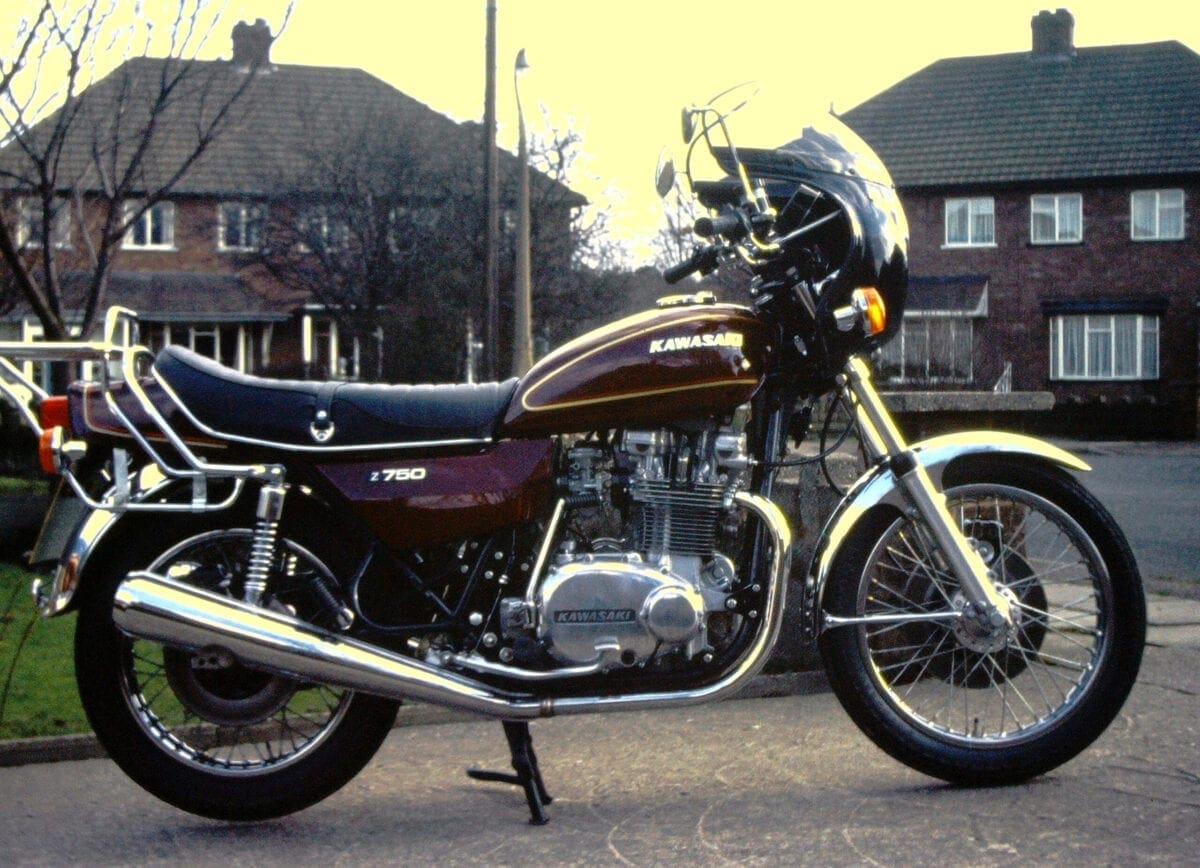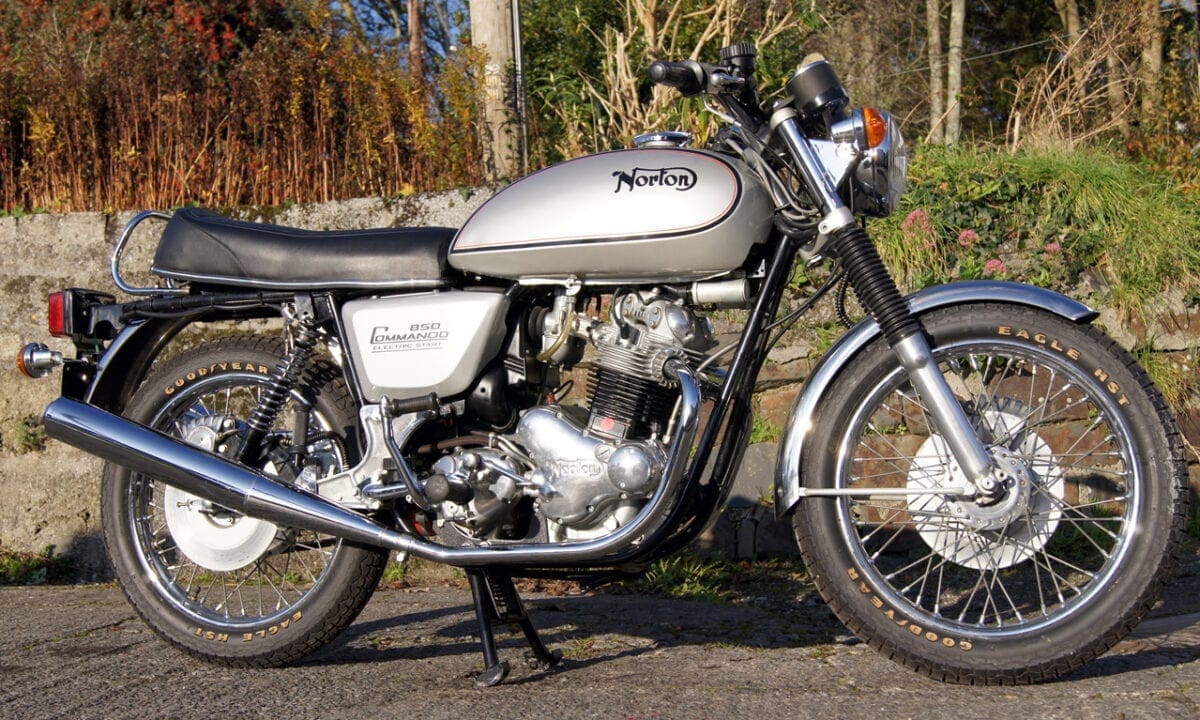They may both be 750 twins but there aren’t that many other similarities between the Kawasaki Z750 and Norton’s Commando. However, it turns out that many RC readers have experience of both, as Colin Leighfield reveals…
It was great to see John Hunter’s letter in RC195 about his Kawasaki Z750B twin. With the short rear mudguard it looks like an import from the US which is where most were sold as it was a limited sales success in the UK. John points out that it was 60 to 80lb heavier than the Commando, ‘a massive difference’.

I’ve owned two Norton 850 (828cc) Commando Interstates, one a 1974 Mk2A from 1974/76 and later a Mk3 from 1983 to 1994, and I bought a new Kawasaki Z750B1 twin in 1976. I know that you need to look more carefully at the numbers.
The original 750 Commando Fastback weighed 420lb. The Z750 twin was listed at 480lb dry, although I’ve seen elsewhere that it was actually a tank half-full weight. However, the Kawasaki was a later design, silenced (strangled?) to meet the latest US regs, with electric starter and disc brakes both ends. The fairest comparison is with the Commando Mk3, similarly strangled for the same reasons and fitted with electric start (marginal) and disc brakes. It weighed 514lb. Working out what is ‘wet’ or ‘dry’ is always confusing but, however you look at it, the equivalent spec Commando is actually heavier than the Kawasaki. Who’s the Fat Boy then?

I haven’t been without a Norton of some kind, even in bits, since 1963. I still have the 650 I’ve owned for 53 years and love the marque, but I don’t kid myself. I Ioved my Mk2A Commando, the torque was legendary and the vibrationless ride at all practical engine rpm was better than any other bike, including the Japanese fours. However, with the noise suppression airbox and black-cap silencers it would not exceed a speedo 100mph, even though acceleration up to that was brilliant. I’ve spoken to police riders who used the Mk3 Interpol and they said exactly the same about the performance. The top end was emasculated and If you didn’t keep the isolastics spot on then it weaved in bends.
Arriving at Roscoff in August 1975 after a fully-loaded 2300 mile two-up camping holiday, the back wheel locked solid and nearly threw us off when the layshaft bearing disintegrated, cracking the gearbox casing. The Commando had then done 6000 miles. I rebuilt the box with a new case and FAG roller layshaft bearing that solved the problem and did a similar touring holiday the following year without issues, although one of the exhaust pipes cracked at 8000 miles and had to be welded up.

By that time I was thinking about changing it. The Triumph workers’ co-operative sit-in episode had wrecked NVT and I wasn’t inclined to buy a T140V. The build quality problems experienced by someone who did buy a Triumph proved that I was right. Kawasaki had recently launched the Z650B1 four and Z750B1 twin. Swallowing my ‘buy British’ preferences, I really fancied the 650 and it was getting great write-ups. When I looked at the 750 I realised that, with its longer seat and general stance, the twin was better suited for two-up long distance touring. So I bought a 750 and my brother bought the 650!
At first I thought the Kwak felt a bit insipid after the Commando, but as I got used to it I realised that as an instant starter, go anywhere machine, it was better. What converted me was a 2900 mile two-up camping trip around France in 1977 when it never seemed to stop raining. The bike was brilliant, eating the mountain roads in the Massif Centrale. Even the disc brakes and Bridgestone tyres never gave me any trouble in the wet. I was concerned about the range with only 3.2 gallons compared the Interstate’s five gallon tank, but the Kawasaki averaged 50mpg and it wasn’t a problem.

The Z750 twin didn’t sell in the UK. When you read reports from the time they are so contradictory you sometimes wonder if they are talking about the same machine! UK roadtests reported a top speed of 108 when the fours were doing 115 which didn’t help, even though the mid-range of the twin was certainly better. There was nothing in it on the road between it and my brother’s 650. Also the 750 was so excessively silenced that it didn’t sound the way we thought a vertical twin should. The result was a bike that didn’t sell well here and has a generally unrepresentative reputation. It was the first big Japanese bike that actually handled well though and, despite the glamour hype of the hairy Z900 and Z1000, if I really wanted to go anywhere serious I’d choose the Z750 twin every time.
My love affair with Nortons continued though. I sold the Kwak in 1980 and in 1983 bought a fully restored 1975 Commando Mk3 Interstate. Its performance was restored by fitting the standard peashooter silencers and earlier air filters. I kept it until I bought a Yamaha FJ1200A. I had loved the Mk3 but it had many exasperating moments as my main bike. My fond memories of the Kwak never went and I’ve recently bought a US import, a 1978 B3 that is being fully restored as a UK spec bike by Richard Clarke’s excellent team at Mavericks Wales. Kawasaki only sold the B1 and B2 in the UK, the B3 has a number of good refinements but they’re all sound and reliable.
So the story continues. Due to the hard work of friends like Les and Sue Emery of Norvil, the foibles of the Commando are well sorted by now and it’s a top machine by any standards. However the good looking Kawasaki Z750B Twin deserves more recognition and makes a lot of sense these days.
———
There’s more about the Kawasaki Z750 in RC114, the Oct13 issue of RealClassic magazine, available by mail-order or to download instantly
———-
Words by Colin Leighfield / Photos by Colin Leighfield, John Hunter and the RC RChive




